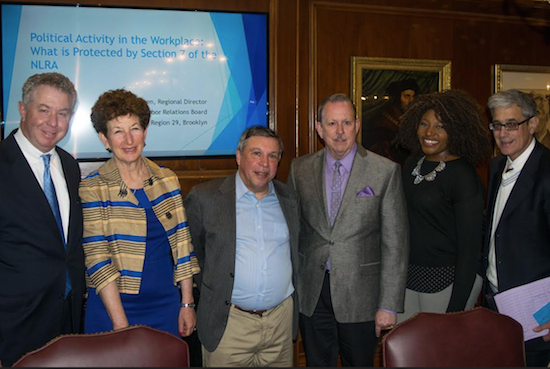Brooklyn Bar Association CLE reviews what you can and can’t say in the workplace

The Brooklyn Bar Association’s (BBA) Employment and Labor Law Committee hosted a Continuing Legal Education (CLE) seminar titled “It’s All Politics: Can I Say That in the Workplace?” at the bar association headquarters on Wednesday.
The event was run by committee Chair Hon. Katherine A. Levine with the help of past BBA President Andrew Fallek; James G. Paulsen, regional director of the Brooklyn Regional Office of the National Labor Relations Board; and attorney Alan Podhaizer.
“We thought that this would be an interesting and exciting CLE in light of what’s going on this year with the presidential campaign,” Levine said. “It has everybody talking at every moment no matter where they are. It seems like nobody can control themselves. So we thought it would be interesting to analyze how political speech is treated in different venues.”

Brooklyn Boro
View MoreNew York City’s most populous borough, Brooklyn, is home to nearly 2.6 million residents. If Brooklyn were an independent city it would be the fourth largest city in the United States. While Brooklyn has become the epitome of ‘cool and hip’ in recent years, for those that were born here, raised families here and improved communities over the years, Brooklyn has never been ‘uncool’.